Title : Targeting platelet driven injury to preserve donor lungs: The impact of dual antiplatelet therapy in ex vivo lung perfusion
Abstract:
Introduction: Every year thousands of patients with end stage lung disease await life saving lung transplantation yet only 20% of donated lungs are suitable for transplant. Ex Vivo Lung Perfusion (EVLP) allows for preservation before transplantation by ventilating and perfusing donor lungs to mimic the dynamic in vivo conditions outside the body. During organ procurement clot formation within small pulmonary arteries is believed to contribute to the limited durability of EVLP. This project aims to investigate the effects of Dual Antiplatelet Therapy (DAPT) in reducing lung injury during EVLP in a porcine model
Methods: Donor lungs were surgically acquired from female Yorkshire pigs and assigned to one of two treatment groups which were tested over a target duration of 12 hours of EVLP: (1) control without antiplatelets (n=5); (2) DAPT which included 650 mg aspirin and 360 mg ticagrelor (n=5). Lung function parameters were collected throughout EVLP, including PaO?/FiO? ratio, pulmonary vascular resistance (PVR), dynamic compliance, and lactate levels. Unpaired two-tailed T tests were used to compare differences in physiologic parameters. All statistical analyses were performed via GraphPad Prism (GraphPad Software, La Jolla, CA, USA).
Results: Dynamic compliance was significantly higher in the DAPT group compared to controls (p=0.005). PVR and lactate levels were significantly lower at 12 hours in the DAPT group (p=0.037 and p=0.041, respectively). PaO?/FiO? ratios did not significantly differ(p=0.603), but remained above 300 in both groups, indicating viability for transplantation in both conditions.
Conclusion: Administering DAPT during EVLP improved lung compliance and reduced PVR and lactate accumulation. Platelets are known to adhere to damaged endothelium, triggering inflammation and thrombosis that contribute to lung injury. Inhibiting this process may ameliorate these effects. These findings lay the groundwork for future studies exploring optimized antiplatelet combinations that could ultimately be incorporated into next generation lung transplantation protocols.



